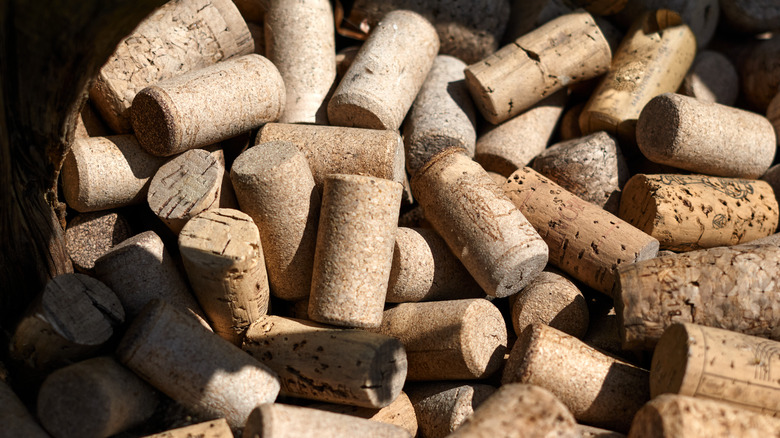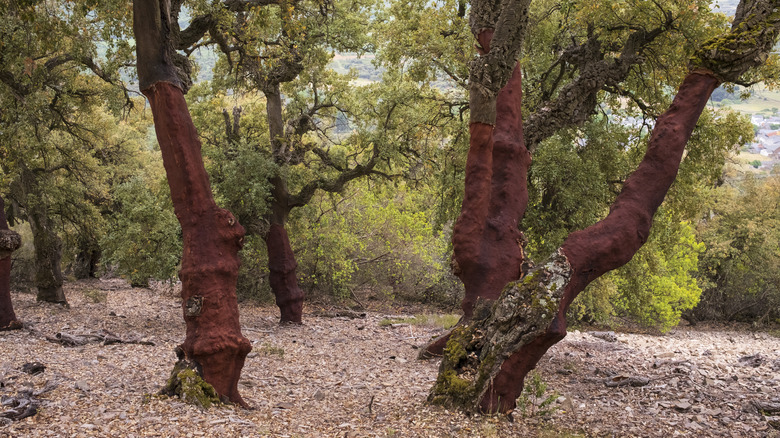The Interesting (& Sustainable) Way Wine Corks Are Made
If you're an oenophile, you may be deeply familiar with the winemaking process your favorite bottle goes through to get from vine to you. Whether your go-to drink is a dry merlot or a zesty sauvignon blanc, you may know all about how your favorite brand sources their wine grapes, or your main concern may simply lie with the price. However, if you're not that in tune with the wine industry, you may be unfamiliar with the increasing concerns within the industry. From several environmental and economic challenges, the wine industry is continuing to change to combat growing problems.
Global warming is impacting nearly all aspects of wine production, younger generations are requiring a shift in brand values, digital marketplaces have brought economic changes, and the rise of organic wine is making waves in the industry. With these changes and more, the wine industry is quickly learning to adapt to become more sustainable while also remaining profitable.
While more sustainable changes come to many aspects of winemaking every year, the wine corks in your bottles might just stay the same; they've long been a product of eco-conscience harvesting.
No trees were harmed in the making of this cork
While many items made from wood require logging, the process of making corks has never required forests to be cut down. This is because corks are actually made from the bark of cork oak trees. And, there are lots of provisions in place that regulate the cork harvesting and production process.
Cork oak trees are naturally found in both Spain and Portugal where laws require that the cork oak must be at least 25 years old before the first harvest of its bark takes place. Once the cork is harvested for the first time, the tree can then not be disturbed for at least another nine years. Almost a decade is required between each harvest to ensure the health of the trees.
Another important regulation is that the harvesting process is always done by professional extractors who are deeply skilled and knowledgeable about the process. Often, the information is passed through generations, and the work is handed down in families, which instills a strong sense of pride. Additionally, harvesting is done in a specific way to ensure that no product is wasted, and uses a method unique to cork trees since it's the only tree that can regrow its bark after it's removed.
So, the next time you pop a cork at a dinner party, be prepared to impress your guests with both your taste in wine and your newfound cork knowledge.

